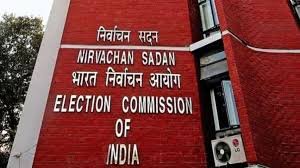By our Financial Correspondent
Mumbai, June 28 (IVC) The scheduled commercial banks’ Non-performing Assets (NPA) ratio slid to a multi-year low of 2.8 per cent. The Indian economy and the financial system remain robust and resilient , anchored by macroeconomic and financial stability, the Reserve Bank of India (RBI) said in its 29th issue of the Financial Stability Report (FSR) released here on June 27.
With improved balance sheets, banks and financial institutions were supporting economic activity through sustained credit expansion, the RBI’s report revealed.
According to the FSR, the capital to risk- weighted of capital assets (CRAR) and the common equity tier1 (CET1) ratio of the scheduled commercial banks (SCBs) stood at 16.8 per cent and 13.9 per cent respectively at the end of March this year.
SCBs’ gross non -performing (GNPA) ratio fell to a multi-year low of 2.8 per cent and the net non-performing assets (NNPA) ratio declined to 0.6 per cent at end March 2024.
“Macro stress tests for credit risk reveal that SCBs would be able to comply with minimum capital requirements, with the system-level CRAR in March 2025 projected at16.1 per cent , 14.4 per cent and 13.0 per cent respectively ,under baseline, medium and severe stress scenarios”, the Central Bank said in the FSR.
“These scenarios are stringent conservative assessments under hypothetical shocks and the results should not be interpreted as forecasts”, it added.
Non-banking financial companies (NBFCs), remained healthy, with CRAR at 26.6 per cent, GNPA ratio at 4.0 per cent and return on assets (RoA) at 3.3 per cent respectively, at the end of March 2024, the report further added.
The RBI noted in the FSR that the global economy was facing heightened risks from prolonged geopolitical tensions, elevated public debt and the slow progress being made in the last mile if disinflation. Despite these challenges, the global financial system had remained resilient and the financial conditions stable, the Reseve bank added. IVC Ckg Mmi




